The incredible microscopic sand photography of Dr. Gary Greenberg
posted Wednesday, January 22, 2014 at 1:49 PM EST
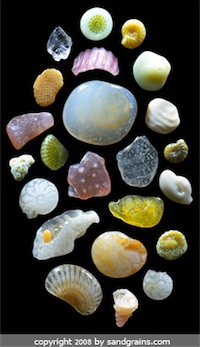
Most people probably realize that each grain of sand is essentially a tiny piece of stone or glass. But have you ever wondered what each of those grains looks like up close? Like, really, really close? Photographer Dr. Gary Greenberg is the man behind sandgrains.com, and by using a microscope, he's created a singular collection of images of grains of sand writ large.
Greenberg's own background is as interesting as his photography. He got his start on the creative side before moving into academia:
Originally a photographer and filmmaker, at the age of 33 he moved from Los Angeles to London to earn a Ph.D. in biomedical research from University College London. Dr. Greenberg was an Assistant Professor at the University of Southern California during the 1980’s. During the 1990’s he invented and developed high-definition, three-dimensional light microscopes, for which he was issued eighteen US patents.
He also photographs much more than just sand (though that is what originally caught our attention), he's also snapped pictures of food, flowers, and even moon dust. The moon dust in particular is fascinating, because it's formed by a completely different process than atmospheric and erosion processes that make our own sand. As his site describes it:
The moon has not atmosphere and not water. That means that rocks don’t erode in the same way as they do on earth. Instead, the moon is continually being bombarded by meteorites and micro meteorites, some the size of a small bit of dust, but travelling at tens of thousands of miles per hour. With no atmosphere to stop them, they hit the moon and instantly vaporize the underlying rock. Over the years, the moon has become covered in a fine powder or dust, the result of the continual micro impacts. Some of the sand and dust looks like dark, basaltic lava. Other grains are clearly crystallized minerals of different sorts. Some are tiny sphere-like objects that are formed when a tiny bit of rock vaporizes and cools into a microscopic sphere. The most unique grains are called agglutinates, which are formed when tiny molten droplets bind together pre-existing grains of sand.
You can see more of Greenberg's work at his site, or pick up one of his books if you're interested.
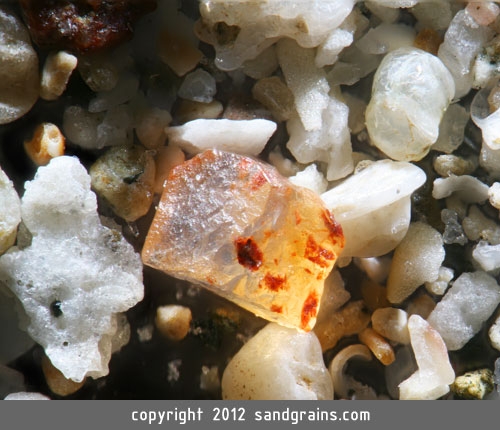
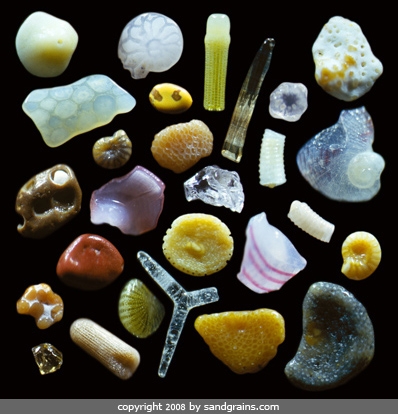
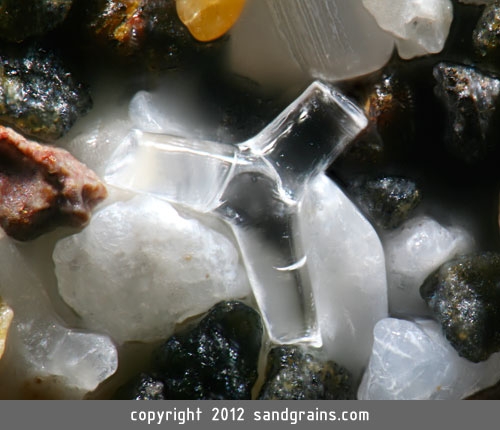
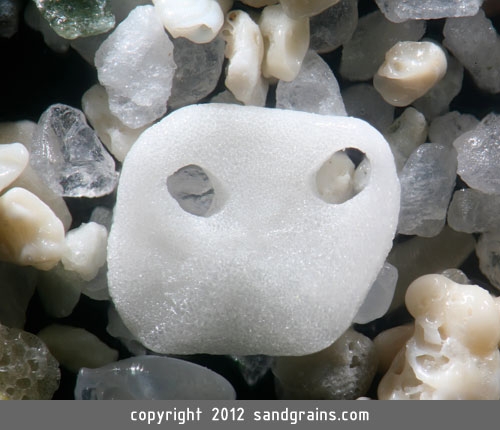
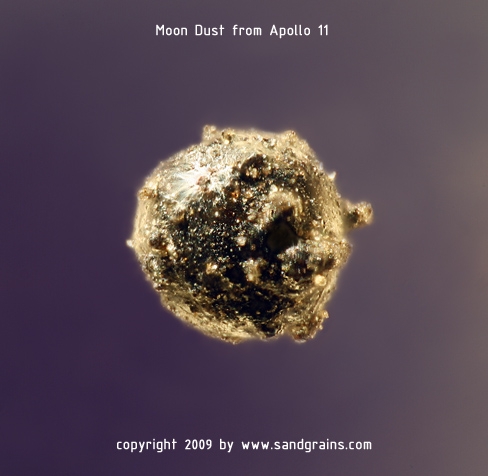
Image © Gary Greenberg, used with permission
(via LaughingSquid)